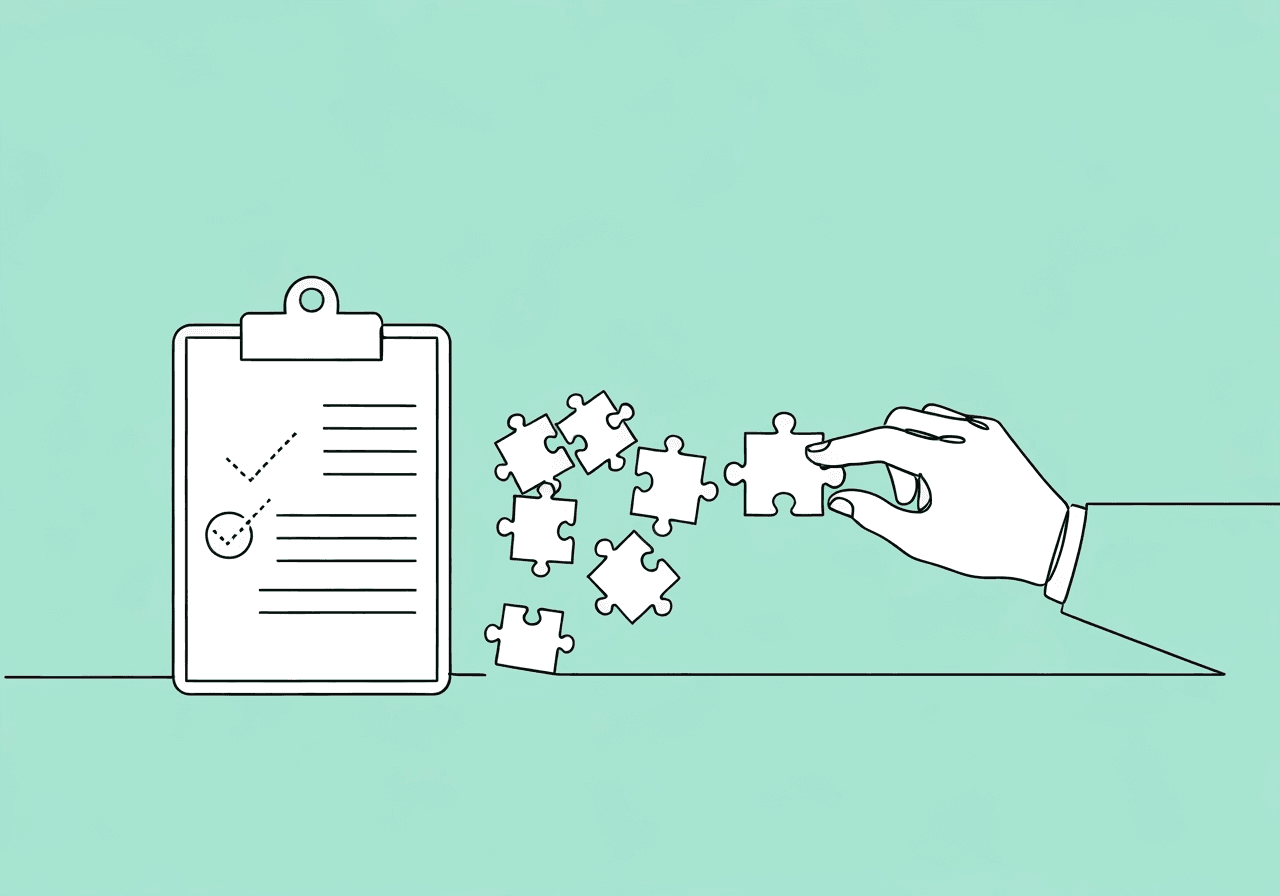RBT vs BCBA Documentation: Key ABA Differences

ABA therapy moves fast, and solid notes keep care ethical and on track for client success. But many RBTs and BCBAs stumble on the documentation details. Getting the hang of the key differences in RBT vs BCBA documentation is important for delivering high-quality services while meeting regulatory standards.
In ABA therapy, RBTs handle notes by focusing on raw, objective data from each session, while BCBAs provide the clinical analysis that steers the treatment plan. Understanding these roles, compliance requirements, and best practices is key to a streamlined workflow where documentation supports better client outcomes.
Key takeaways:
- RBT session notes are objective and implementation-focused; BCBA notes add analysis and plan updates.
- BACB requirements differ by role, including ethics, supervision documentation, and oversight duties.
- Clear, concise note structures reduce errors and support timely BCBA decisions.
- Collaboration improves when teams standardize formats and feedback loops.
- Accurate documentation protects clients, supports audits, and drives progress.
Here’s what we’ll cover:
- Core roles of RBTs and BCBAs in ABA.
- A side-by-side comparison of documentation types.
- BACB-mandated compliance for each role.
- Best practices for efficient note-taking.
- Collaboration strategies between RBTs and BCBAs.
Understanding RBT and BCBA Roles in ABA
Registered Behavior Technicians (RBTs) and Board Certified Behavior Analysts (BCBAs) play complementary yet distinct roles in ABA therapy. RBTs implement behavior intervention plans under supervision, focusing on direct client interaction. The Behavior Analyst Certification Board (BACB) RBT Handbook states that RBTs must work solely under the guidance of a BCBA or BCaBA, emphasizing hands-on service delivery (BACB RBT Handbook: https://www.bacb.com/rbt-handbook/).
BCBAs, as independent practitioners, design and oversee treatment programs. They conduct assessments, analyze data, and make clinical decisions to ensure interventions align with evidence-based principles. As outlined in the BACB’s guidelines, BCBAs are qualified to provide behavior-analytic services independently, including the supervision of RBTs (BACB BCBA Handbook: https://www.bacb.com/bcba-handbook/).
These roles intersect in documentation, where RBTs record session details and BCBAs review them for program adjustments. Clear role awareness prevents overlap and supports the ethical documentation standards outlined in the BACB Ethics Code for Behavior Analysts.
Key Differences in RBT vs BCBA Documentation
The core distinction in RBT vs BCBA documentation centers on scope and depth. RBT notes capture factual, session-specific observations, while BCBA notes incorporate analysis and planning.
RBT session notes focus on implementation details. They document observable behaviors, interventions applied, client responses, and data from ABA data collection logs without interpretation. For instance, an RBT might note: “Client completed 8 out of 10 trials of discrete trial training with 80% accuracy, using verbal praise as reinforcement.” This aligns with the BACB’s requirement for objective recording to support supervision (BACB Ethics Code: https://www.bacb.com/ethics-information/).
On the other hand, BCBA supervision notes emphasize evaluation and decision-making. They include reviews of RBT data, assessments of treatment efficacy, and recommendations for modifications to the behavior intervention plan. A BCBA might add: “Data indicates a 20% increase in target skill; adjust reinforcement schedule to fade prompts.” This reflects the BCBA’s role in overseeing service delivery and ethical compliance.
To illustrate these ABA note-taking differences, consider this side-by-side comparison:
| Feature | RBT Documentation | BCBA Documentation |
|---|---|---|
| Focus | Records concrete, observable actions from the session. Example: "Client engaged in 3 instances of SIB during DTT. Each time, the behavior was blocked and redirected per the BIP." | Provides clinical analysis and program oversight. Example: "SIB frequency has decreased 40% post-intervention. Continue current BIP and begin to fade redirection prompts." |
| Content Depth | Factual data only (e.g., frequency, duration, latency, prompts used, client responses). No subjective interpretation. | Adds clinical interpretations, judgments, and rationale for plan changes or new targets. |
| Frequency | Completed after each client session to ensure timely and accurate data capture. | Created during supervision, progress reviews, or whenever clinical updates are needed. |
| Purpose | Creates a reliable, objective record for supervisory review and continuity of care. | Informs treatment planning, demonstrates oversight, and documents ethical compliance. |
These differences ensure RBT notes provide the raw data needed for analysis, while BCBA notes drive client progress.
BACB Compliance: RBT vs BCBA Documentation Requirements
BACB guidelines mandate precise documentation to uphold ethical standards and protect client welfare. Both RBTs and BCBAs must maintain accurate records, but requirements differ by responsibility level.
For RBTs, the RBT Ethics Code 2.0 requires honest, objective documentation of all client interactions, including data collection and session details (RBT Ethics Code 2.0: https://www.bacb.com/ethics-information/). RBTs must report errors promptly and follow supervisor directives on record-keeping. Supervision documentation includes at least two face-to-face contacts per month, with records of dates, duration, and content retained for potential audits (BACB RBT Requirements: https://www.bacb.com/maintaining-rbt-certification/).
BCBAs bear broader accountability. They document supervision sessions, RBT performance feedback, and behavior intervention plan notes. Timelines for creating and reviewing plans vary by jurisdiction and payer, so the BCBA is responsible for consulting specific insurer policies and state laws to ensure all documentation stays current and clinically appropriate. BCBAs also attest to RBT background checks and maintain supporting records. All documentation must align with laws on confidentiality, retention, and destruction.
Non-compliance can have serious consequences, including risking certification revocation, as detailed in the BACB’s ethics enforcement policies (BACB Ethics Enforcement: https://www.bacb.com/ethics-information/reporting-to-ethics/). For a full checklist, explore our ABA documentation checklist for RBTs.
Common elements for both roles include:
- Client identifiers (name, date, session time).
- Objective descriptions of behaviors and interventions.
- Signatures and timely submission (within 24–72 hours).
- Secure storage per HIPAA standards.
These rules ensure BCBA supervision notes and RBT session notes support audits and uphold ethical documentation standards.
Best Practices for Accurate and Efficient Note-Taking
Effective note-taking reduces errors and supports better clinical decisions. Start with preparation: review treatment plans before sessions, and use clear shorthand to save time.
For RBT session notes, prioritize objectivity. Use measurable terms like “3 instances of elopement lasting 2 minutes each” instead of vague phrases. Adopt structured formats like SOAP (Subjective, Objective, Assessment, Plan) to organize details—though RBTs focus primarily on the Objective section. Write notes promptly after sessions to capture details accurately, and include any barriers like environmental distractions.
BCBAs should integrate data trends in their notes. Review RBT submissions weekly, noting discrepancies and providing feedback. Templates can boost consistency and ensure you document the clinical rationale for changes. Digital platforms can also help automate data entry and reduce administrative burden.
General best practices include:
- Consistency: Standardize terminology across notes (for example, define “prompt” clearly).
- Brevity: Keep entries concise—focus on essentials without filler.
- Training: RBTs benefit from behavioral skills training that models strong note-writing.
- Review: BCBAs should co-sign or approve RBT notes when required to verify compliance.
Build these habits into your routine for compliant, efficient workflows. Our ABA SOAP notes guide offers templates to get started.
Strategies for Effective RBT and BCBA Collaboration
Strong teamwork hinges on clear communication through documentation. RBTs should flag uncertainties in their notes, such as “Client resisted intervention—recommend BCBA input,” which prompts timely BCBA review.
BCBAs can foster collaboration by scheduling regular feedback sessions. Share annotated RBT notes to highlight strengths and areas for growth, aligning with BACB supervision mandates. Using shared digital tools for real-time access can streamline this process, provided they’re HIPAA compliant.
Practical strategies:
- Weekly reviews: BCBAs analyze RBT data to adjust plans collaboratively.
- Training integration: Embed note-taking skills in supervision, using examples from actual sessions.
- Error handling: Establish protocols for correcting notes jointly while maintaining clear audit trails.
- Goal alignment: Ensure notes reflect shared objectives, like progress toward IEP targets.
This approach meets BACB standards and supports professional growth. For deeper dives into supervision logs, visit our RBT supervision documentation guide.
Frequently Asked Questions
How do RBT session notes differ in structure from BCBA session notes?
RBT notes capture factual session details like interventions, observed behaviors, and data points in a simple format, such as a chronological log or the Objective section of a SOAP note. BCBA notes add an analytical layer, including data interpretation, assessments of treatment efficacy, and plan modifications, often using progress reports or supervision templates. This ensures RBTs provide raw data while BCBAs drive clinical decisions.
What specific elements must be included in RBT session notes?
Essential elements include client identifiers; session date, time, and location; objective behavior descriptions (for example, frequency and duration); interventions used; client responses; reinforcement details; and signatures. It’s crucial to avoid interpretations and stick to observables to support supervision and compliance, as required by BACB ethical standards.
How do BCBAs use session notes to inform treatment adjustments?
BCBAs review RBT notes to identify trends in client progress, such as skill acquisition rates or behavior reductions. They analyze this data against treatment goals to recommend changes, like fading prompts or introducing new targets. This data-driven process supports ethical, effective interventions, with a clear rationale documented for audits.
What are the legal and ethical requirements for documenting RBT sessions?
Requirements include creating objective, timely records that comply with the BACB Ethics Code, maintain confidentiality per HIPAA, and follow state laws on record retention. Record retention periods for medical records vary by state law and are often 7 years or longer. Separately, HIPAA requires certain compliance documents, like privacy policies, to be retained for 6 years. RBTs must avoid falsification, correct errors promptly, and submit notes for BCBA review.
How often must RBTs receive supervision, and what documentation is required?
The BACB mandates at least two face-to-face supervision contacts per month for RBTs. These sessions must be documented with dates, duration, content, and goals discussed. BCBAs are responsible for retaining these records for audits, including performance feedback tied to session notes (BACB RBT Supervision Requirements: https://www.bacb.com/maintaining-rbt-certification/).
What are the most common mistakes RBTs make when writing session notes?
Common errors include using subjective language (for example, “client was good”), providing incomplete data (missing metrics), delaying note-writing, or omitting barriers to progress. These mistakes can undermine compliance. Best practices emphasize training and the use of templates to promote objectivity and thoroughness.
In summary, mastering the differences in RBT vs BCBA documentation keeps ABA services compliant and impactful. RBTs provide the foundational data through objective session records, while BCBAs add analytical oversight for treatment evolution. BACB guidelines reinforce this division, emphasizing accuracy, ethics, and collaboration to safeguard clients.
To apply these insights, start by auditing your current notes against BACB standards to find any gaps in objectivity or timeliness. Adopting a shared template system can streamline reviews, while monthly training will build stronger note-taking skills across your team. Taking these steps will reduce compliance risks and improve client outcomes, all grounded in clear and accurate RBT vs BCBA documentation.
Popular in ABA Session Notes & Tools
- 1
RBT Supervision Documentation: 2025 BACB Guide & Templates
2,2829 min read - 2
Master ABA Medical Necessity Documentation: Avoid Denials
1,1119 min read - 3
ABA Documentation Best Practices for RBTs: Essential Tips
9695 min read - 4
Master ABA SOAP Notes: Guide for RBTs & BCBAs
9559 min read - 5
Guide to ABA Progress Reports for Insurance Reauthorization
7728 min read
Popular in ABA Session Notes & Tools
- 1
RBT Supervision Documentation: 2025 BACB Guide & Templates
2,2829 min read - 2
Master ABA Medical Necessity Documentation: Avoid Denials
1,1119 min read - 3
ABA Documentation Best Practices for RBTs: Essential Tips
9695 min read - 4
Master ABA SOAP Notes: Guide for RBTs & BCBAs
9559 min read - 5
Guide to ABA Progress Reports for Insurance Reauthorization
7728 min read
Related Resources
Explore more helpful content on similar topics

BCBA Guide to Auditing RBT Session Notes Effectively
Discover expert strategies for BCBA auditing RBT session notes to boost procedural fidelity and ensure RBT note compliance. Learn to spot common errors, link to CPT codes like 97153, and implement checklists for superior ABA documentation quality.

Direct vs. Indirect RBT Supervision Documentation Guide
Learn the key differences in Direct vs. Indirect RBT Supervision Documentation to meet BACB standards. Discover BCBA supervision log requirements, essential compliance tips, and best practices for effective RBT oversight.

9 RBT Session Note Errors BCBAs Can Fix Fast
Tackle RBT session note errors BCBA supervisors encounter most. Discover the top 9 common mistakes, like subjective language and data mismatches, with fast fixes for better ABA compliance, audits, and training. Get your essential checklist now!